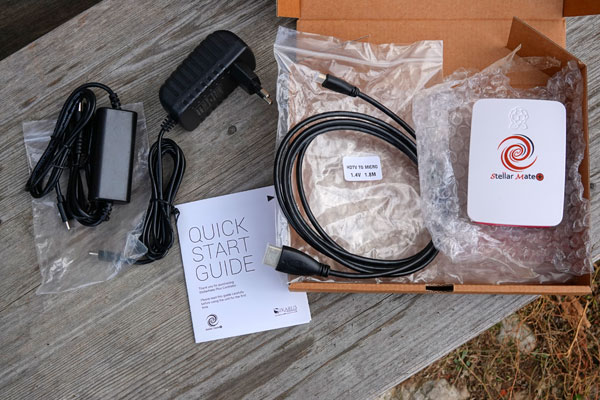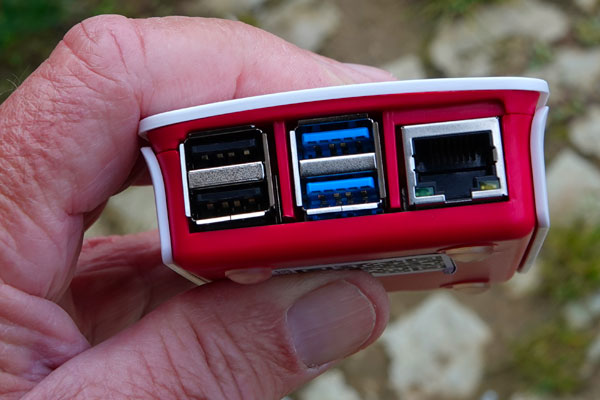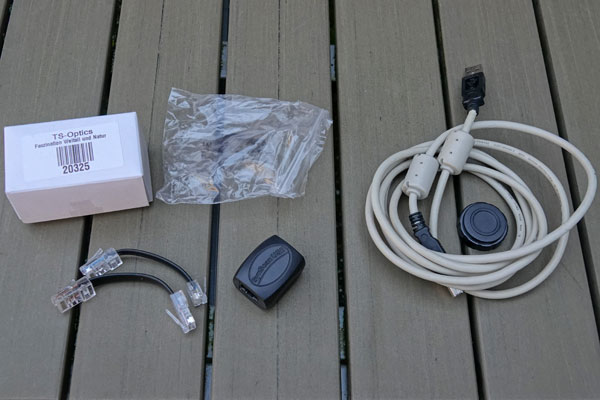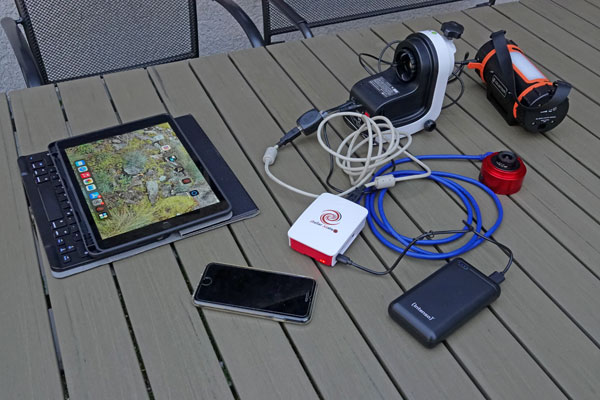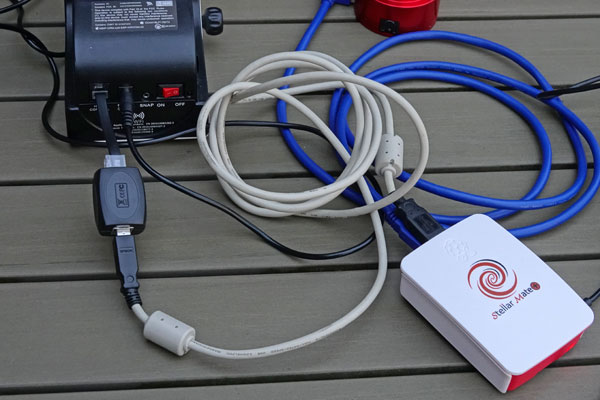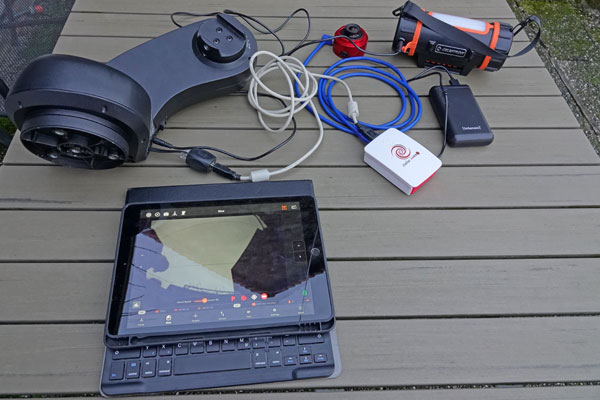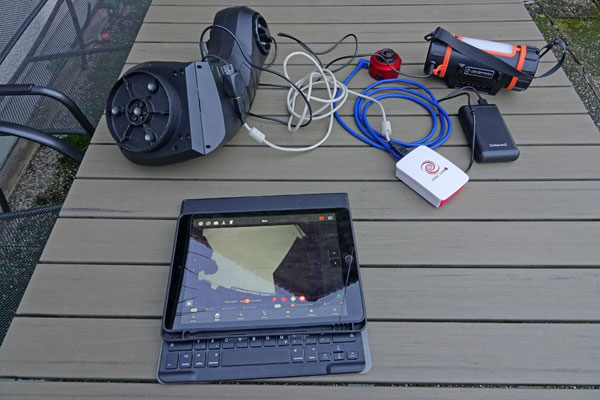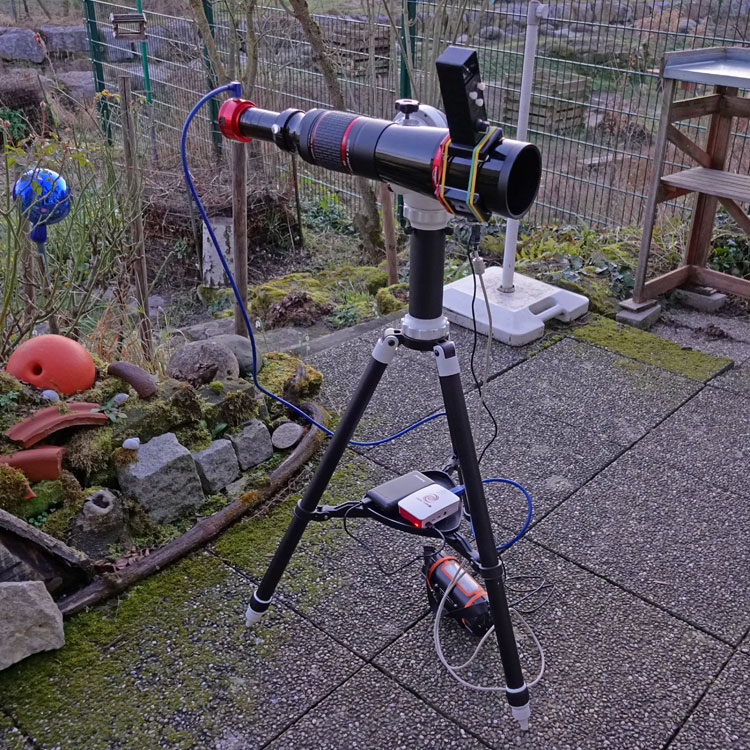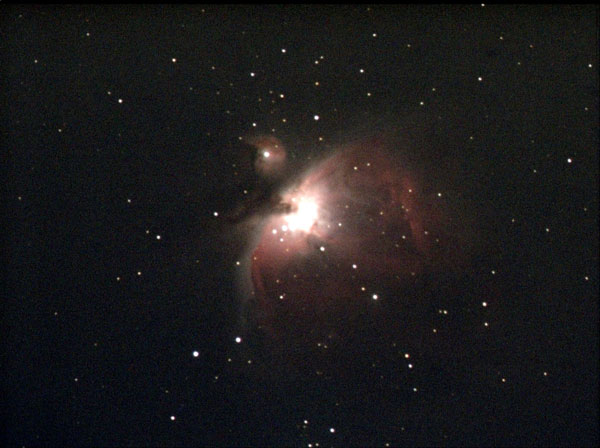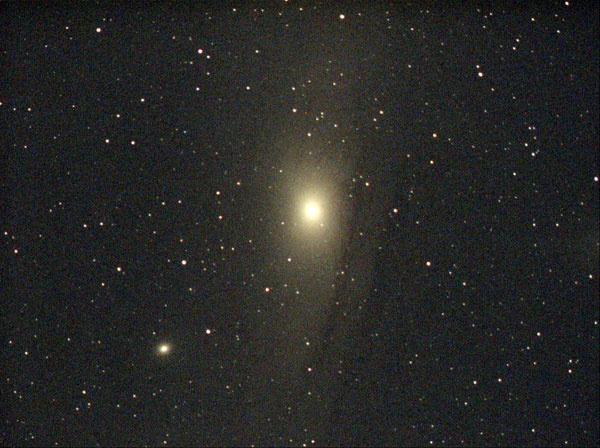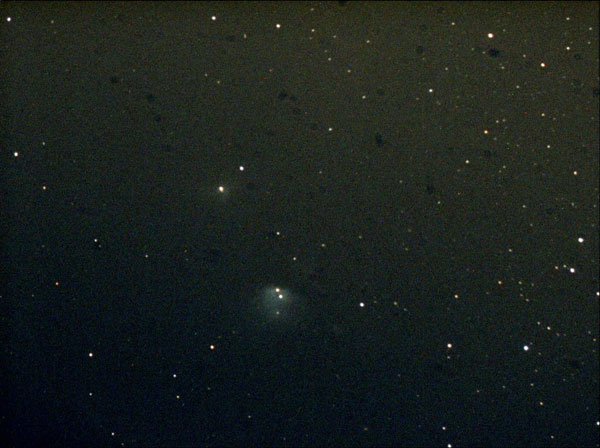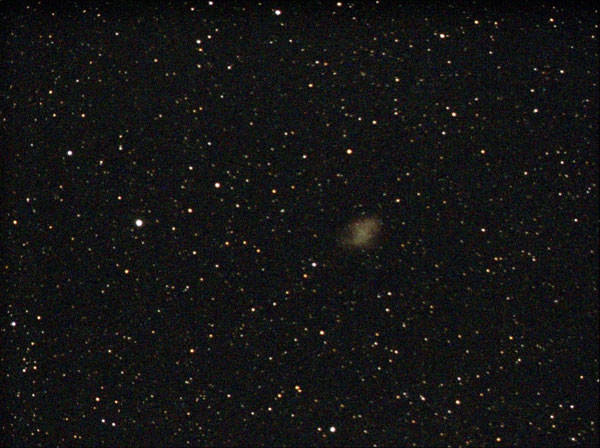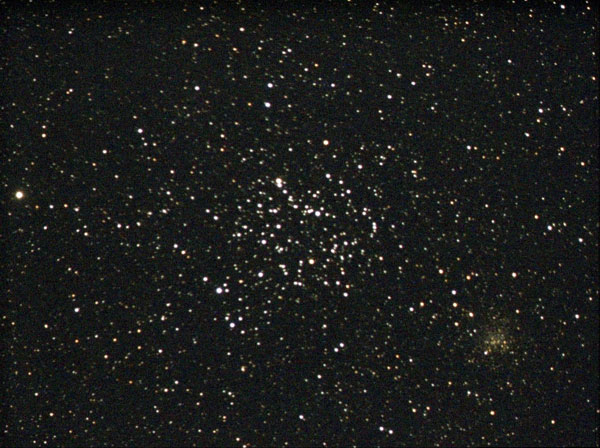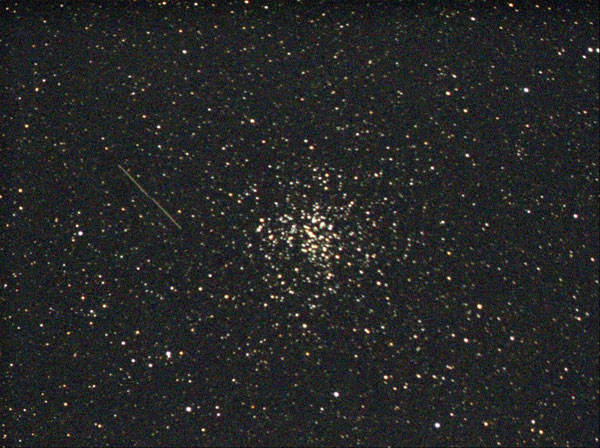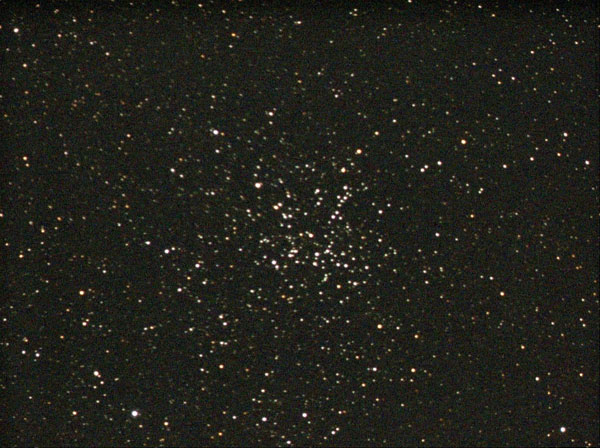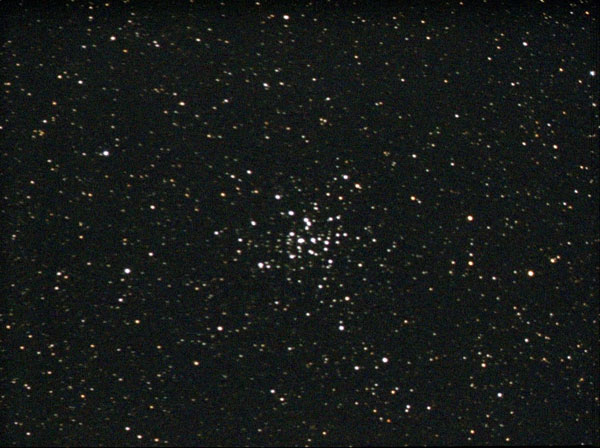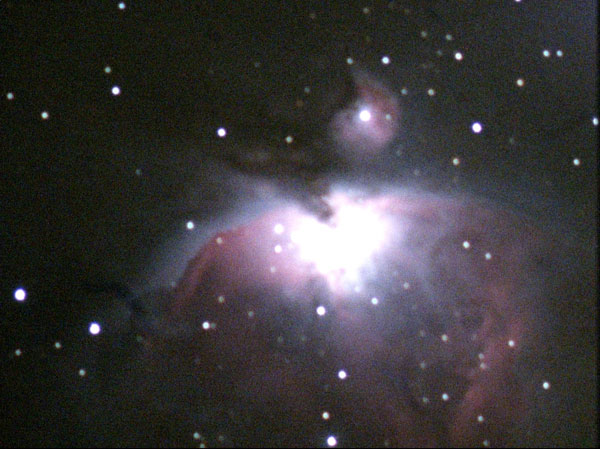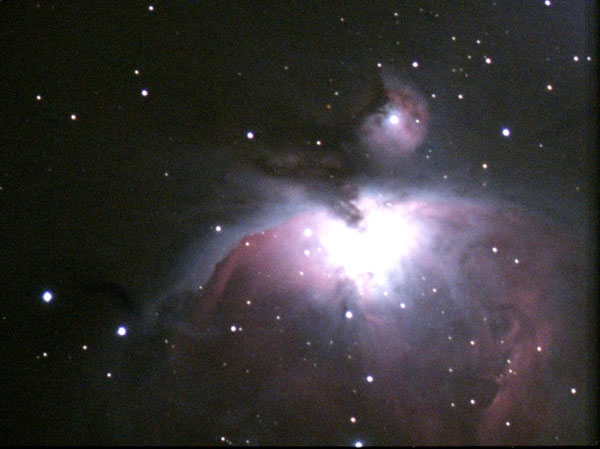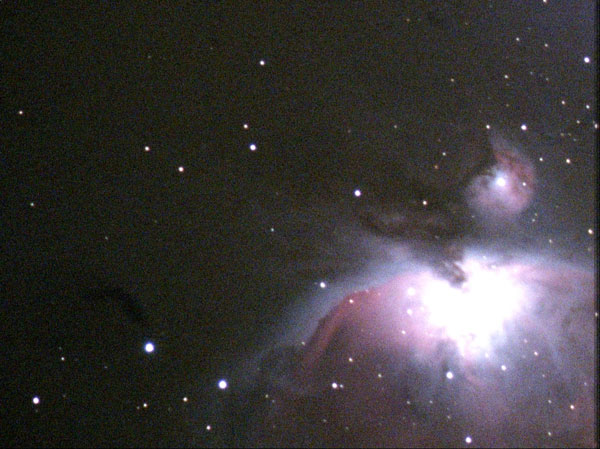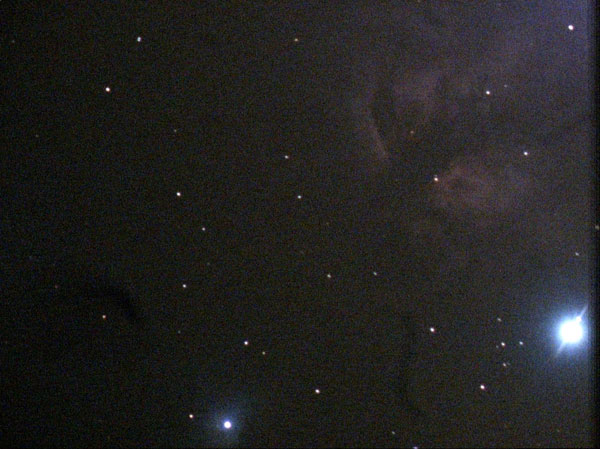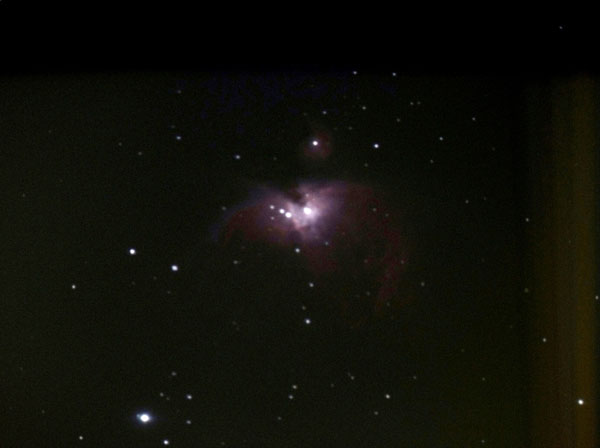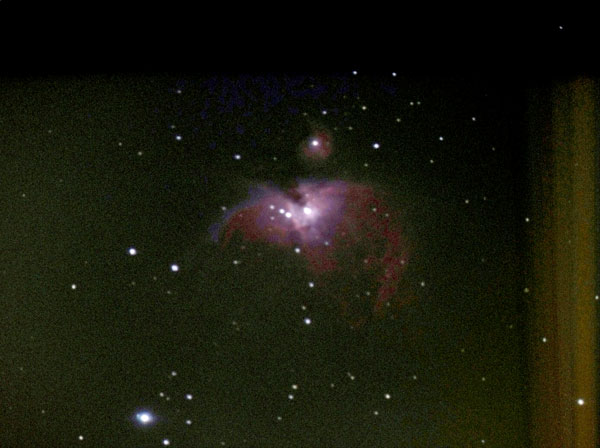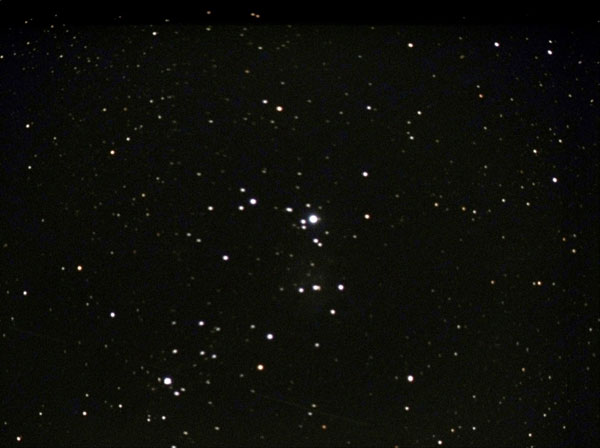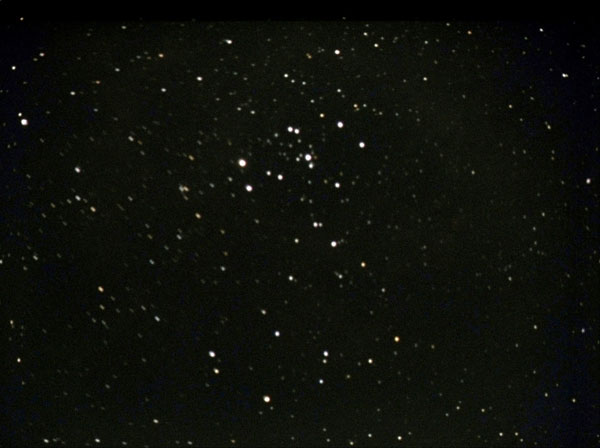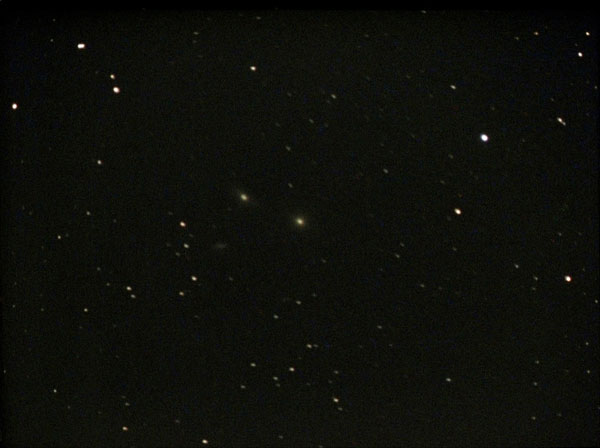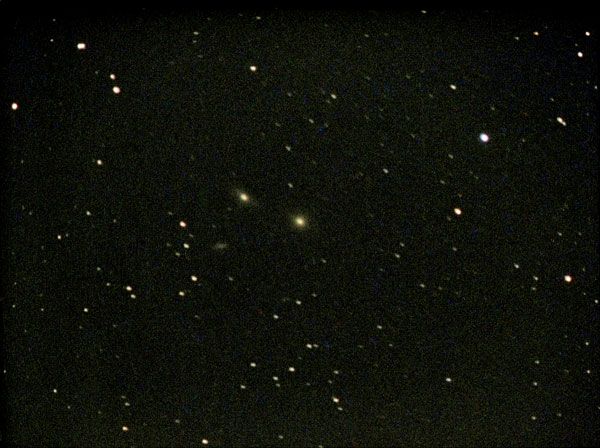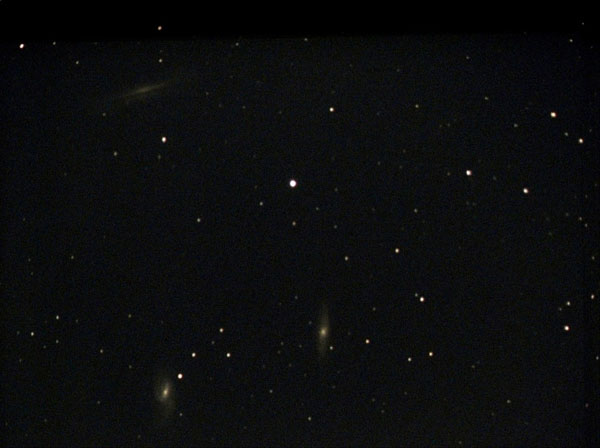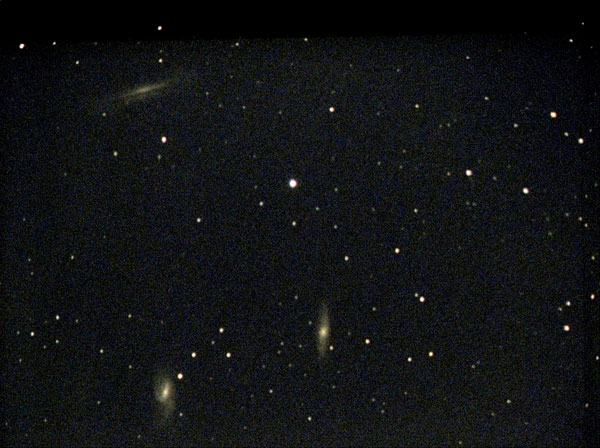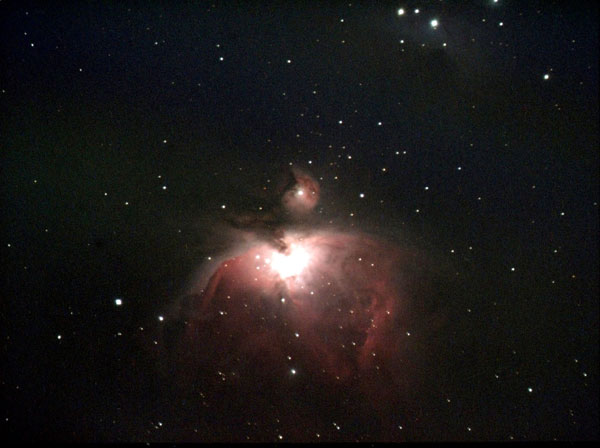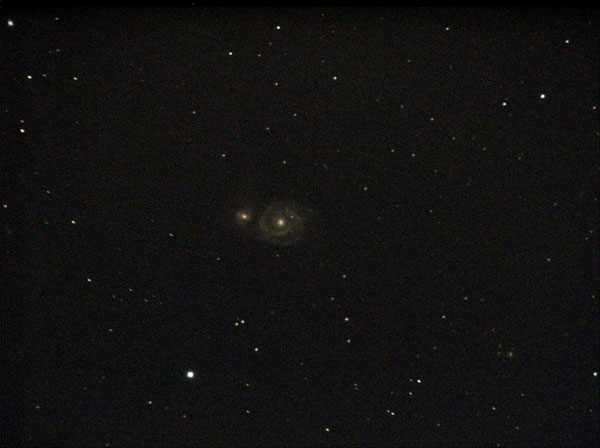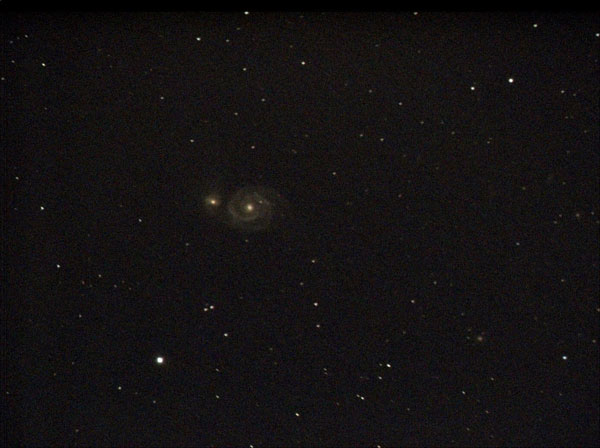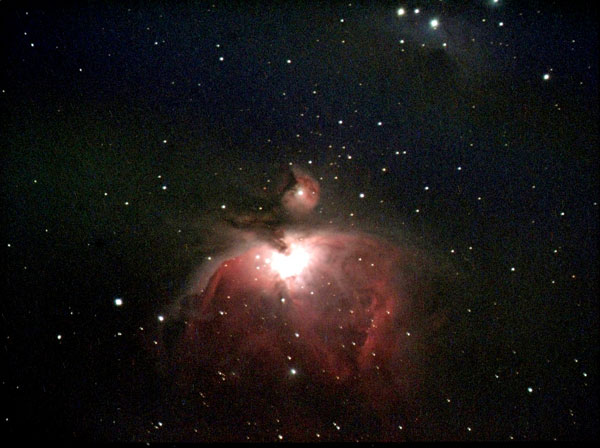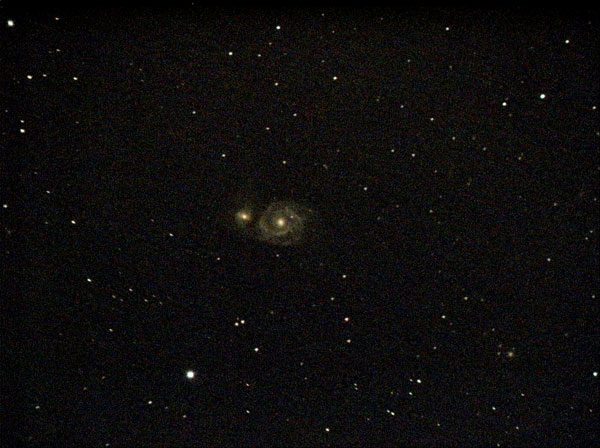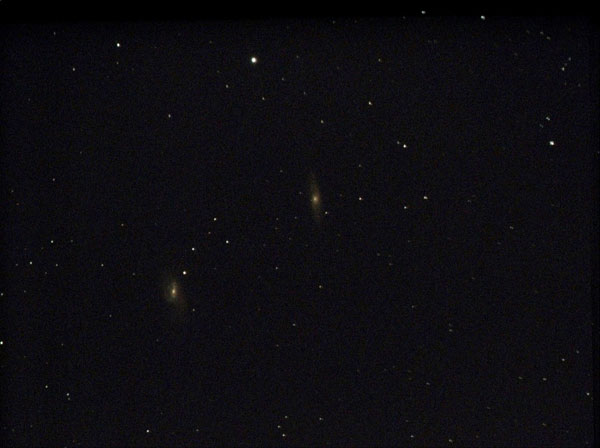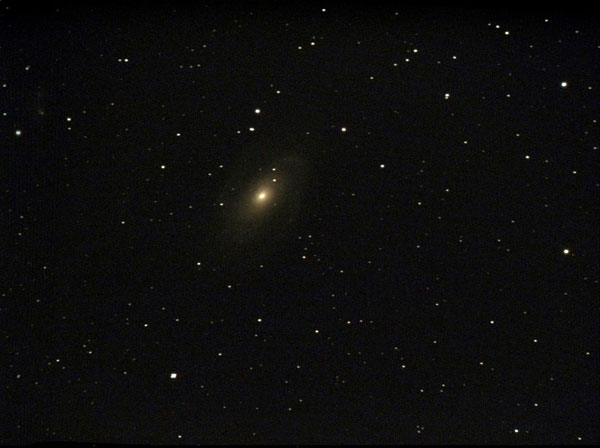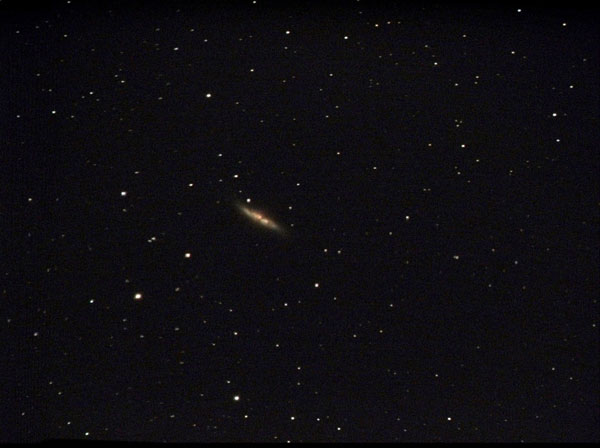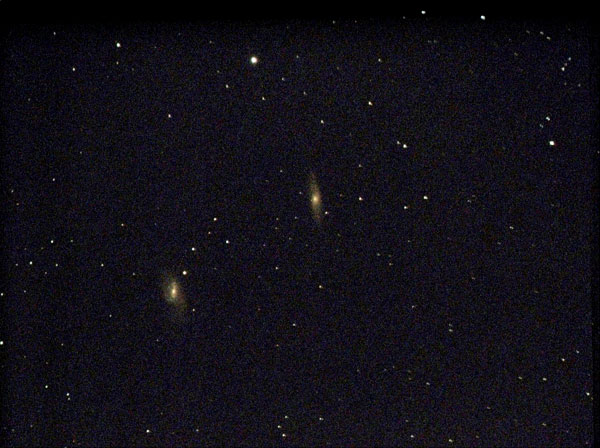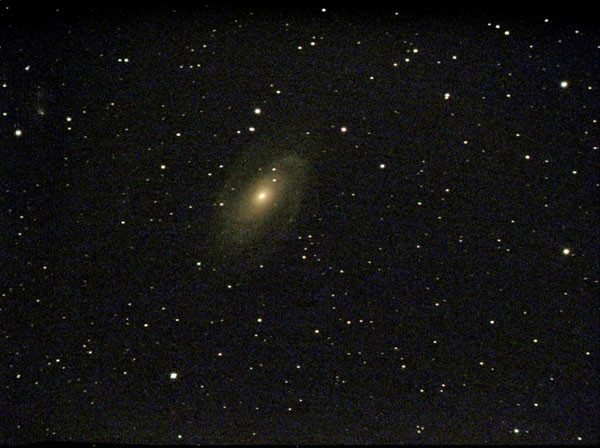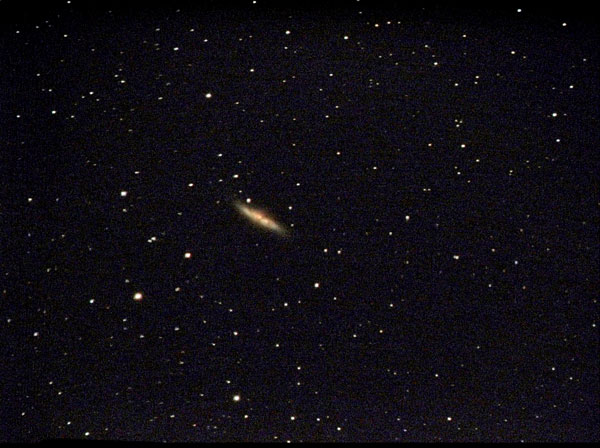Ikarus StellarMate Plus - First Experiences (Part 2: With USB Dongle)
Preface | Introduction | AZ-GTi (and Star Discovery) Connected with Sky-Watcher USB Dongle to StellarMate, ASI224 | Now also with Atik Infinity... | Now also with ASI294... | Preliminary Conclusions | Links
Archive
On this page and a preceding one, I report on my first experiences with my new astrophotography computer Ikarus StellarMate Plus (ordered on October 21, from Astroshop, arrived on October 26, 2021). I put the "cut" between both pages at the point in time when I started to connect the mount no longer via Wi-Fi but via a USB dongle to the StellarMate (end of December 2021/beginning of January 2022).
Note: For simplicity reasons, I will often call the device just "StellarMate"...
See also:
- Ikarus StellarMate Plus - Information Archive
- Ikarus StellarMate Plus - First Experiences (Part 1: with Wi-Fi only) Archive
- Ikarus StellarMate Plus - First Experiences (Part 2: with USB Dongle) Archive
- Ikarus StellarMate Plus - Further Experiences Archive
- Ikarus StellarMate Plus - Web Discussions Archive
- Ikarus StellarMate Plus - Instructions Archive
- Ikarus StellarMate Plus - Tips and Tricks Archive
Note: At the beginning of June 2024, I gave my astrophotography computer Ikarus StellarMate Plus away. I therefore cannot report any further experiences with it here. |
Preface
What the StellarMate Plus from Ikarus Technologies is, and why and for what purpose I purchased it, can be found on page Ikarus StellarMate Plus - Information. On this and a preceding page, I report on my first experiences with it. Initial experience relates to getting the technology to work, and gaining some experience using different cameras and how well these cooperate with StellarMate.
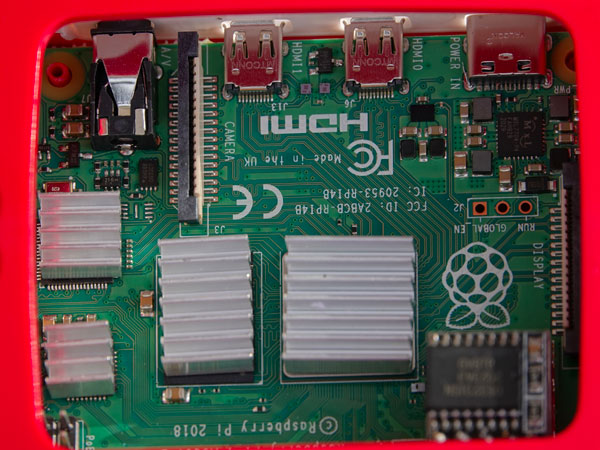 |
||
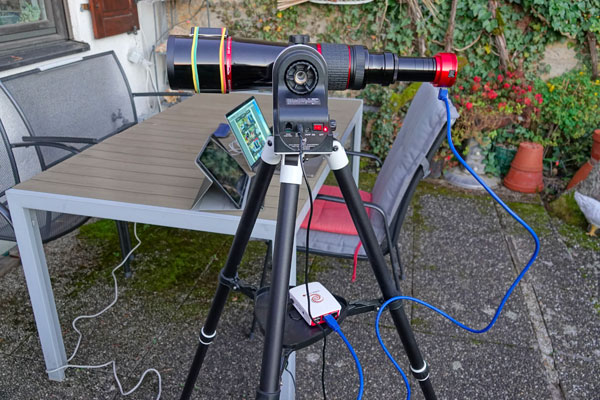 |
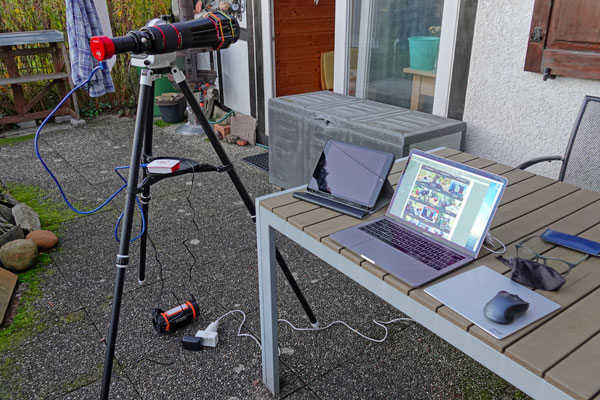 |
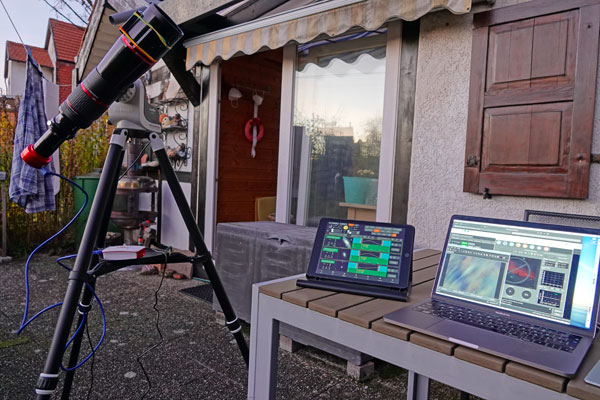 |
Introduction
My attempts with the StellarMate lasted from November 2021 until April 2022.
On this and a preceding page*, I would like to describe my first experiences and
not go too much into details. I compile the exact instructions that I
came up with on separate pages (at the moment, there is only one page). I also started
a "tips
and tricks" page...
*) I put the "cut" between both pages at the point in time when I started to connect the mount no longer via Wi-Fi but via a USB dongle with the StellarMate (end of December 2021/beginning of January 2022).
Note: Once the "first experience" problems are overcome, it makes sense for visitors of this site to jump directly to More Experiences!
Sky-Watcher USB Dongle for Mount
The StellarMate offers various ways to connect to mounts, for example wirelessly or via USB cable (which is actually a serial connection). Of course, one would prefer to do without cables and prefer a wireless connection between the mount and the StellarMate. So I initially tried various wireless options (StellarMate as a hotspot, mount as a hotspot, infrastructure mode via the home network). In the end, after a lot of effort, I got all variants to work, but preferred the version with the StellarMate as a hotspot.
However, after several people drew my attention to the possibility of connecting the mount to the StellarMate via USB dongle, I bought a Sky-Watcher USB dongle and now only use it because it was generally assumed that the connection and the entire equipment would be more stable this way. I have never really tested this and rely on the statements of others on this point. Besides, I have already “sunk” so much time with the StellarMate that I don't want to experiment any more at this point. All in all, the equipment runs stably with the USB dongle!The only fly in the ointment is that the Sky-Watcher Star Discovery mount, after initial success, can no longer be operated with the dongle after updating the software. Maybe one day it will be possible again...
AZ-GTi (and Star Discovery) Connected with Sky-Watcher USB Dongle to StellarMate, ASI224
After several posters in a Cloudy Nights discussion had written that they use a Sky-Watcher USB dongle (pus USB printer cable) instead of the WiFi to connect the StellarMate to the mount and that this would have significantly increased the stability of the system, I bought such a dongle in December 2021. In addition, a Sky-Watcher employee had recommended this dongle in a YouTube video covering the AZ-GTi mount (including for software updates).
Dry Run with ASI224, StellarMate, AZ-GTi, and Star Discovery (January 8, 2022)
|
Sky-Watcher Synscan USB dongle and USB printer cable |
AZ-GTi connected to Stellarmate via WiFi |
AZ-GTi connected to Stellarmate via USB dongle and USB printer cable |
|
Ditto, detail |
Star Discovery connected to Stellarmate via USB dongle and USB printer cable |
Ditto |
On January 8, 2022, I finally found the time to try out the USB dongle during the day with a test setup. First, I wanted to run the AZ-GTi mount wirelessly to have a comparison, but that failed because the mount did not accept StellarMate as a hotspot (probably my mistake...). I then tried the USB dongle, which I connected to the StellarMate via a USB printer cable. To use this setup, I had to create a new device profile that entailed the "SkyWatcher ALT/AZ" entry instead of the AZ-GTi mount (I still need to look up the exact names...). Overall, the StellarMate now worked fine with my mount and camera in this dry run, but the "proof of the pudding" at night was still pending...
I also tried the Sky-Watcher Star Discovery mount with the StellarMate once more, this time connected via the USB dongle and using the same profile as for the AZ-GTi mount. And lo and behold, while the Star Discovery mount showed a somewhat strange behavior when connected via Wi-Fi (and thus was not usable...), it now worked without any problems. According to my first impressions, it worked even better, because it did not overshoot, as the AZ-GTi did and still does.
All in all, the dongle test proved to be successful in my first "dry run". So the question remained, how well the plate solving and GoTo would work at night. I have already had very mixed experiences with this...
Night Test with PS 72/432, ASI224, StellarMate, and AZ-GTi at USB Dongle (February 9, 2022)
In this night test, I connected the AZ-GTi to the StellarMate via "dongle", i.e. cable, for the first time "in the field". Equipment used:
The home position of the mount was rather imprecise.... I thought, according what I had seen in Cuiv's video, that this does not matter too much... Accordingly, the GoTo to Rigel and M 42 did not work. Once or twice the "Align" worked with approaching the target. Mostly, however, it went nowhere or issued an error message ("Alignment failed"*), even when M 42 was visible on the PS72 photo.
*) I have to clarify what this message means and under which circumstances it is issued.
My guess is that it is not signaling the termination of the alignment, but it signals that the error is greater than the maximum deviation, which I set to 270" following Cuiv.
Using Live Stacking, I was able to manually take stacked photos this time (by clicking the diskette icon in the Live Stacking controls), which were saved in the "StellarMate" album in the iPad "Photos" app. Whether single shots were also saved, and if so, where, I unfortunately do not know... (obviously, nothing was saved.)
Partially, I also took photos with 2x2 binning (see beleow). Live stacking rarely worked correctly...
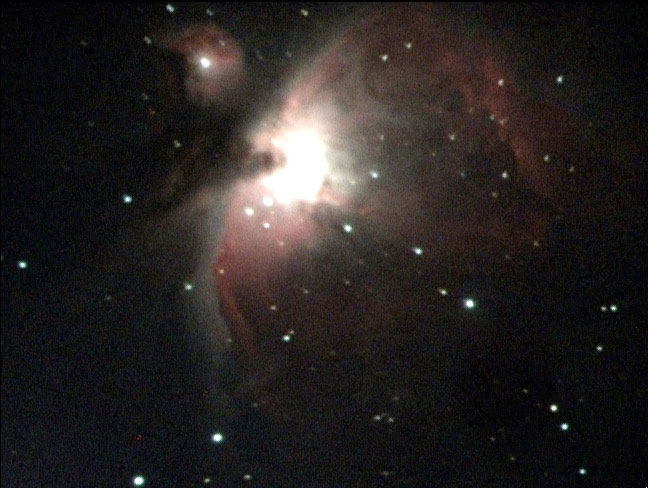 |
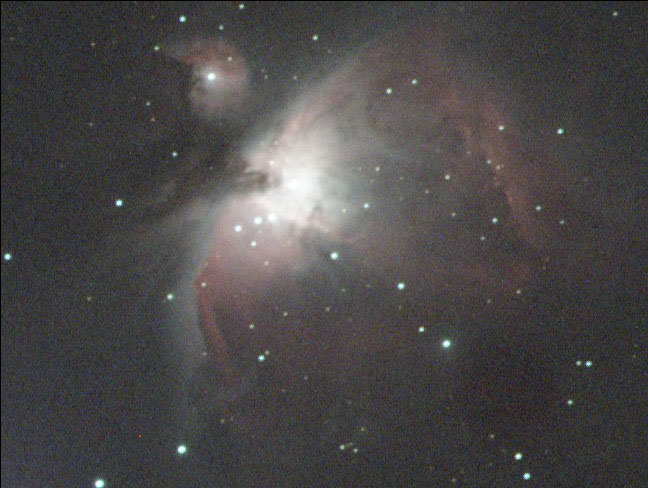 |
|
M 42 - Feb 9, 2022, 2x2 binning, unprocessed |
M 42 - Feb 9, 2022, 2x2 binning, unprocessed |
Dry Run with ASI224, StellarMate, AZ-GTi, and Star Discovery (February 11, 2022)
After I had installed the software version 1.6.2 on February 11, 2022 and then tested the AZ-GTi and Star Discovery mounts in a "dry run" during daytime, the Star Discovery mount was no longer recognized even when connected via the USB dongle (I tried then for several days...). When I connected the AZ-GTi via cable, the dry runs still were successful.
Addendum: On March 30, 2022, I repeated the dry run with both mounts, after I had installed the OS version 1.7.0 and the App version 2.5.0 in the meantime. Nothing changed in the results: Only the AZ-GTi mount was recognized!
Night Test with PS 72/432, ASI224, StellarMate, AZ-GTi, and Star Discovery (February 12, 2022)
This time, night tests worked using the cable connection with the AZ-GTi, but not with the Star Discovery (tested only briefly). Initially, the AZ-GTi mount moved directly to M 42 after I had made a more precise alignment for the home position, but I still got an "alignment failed" message (although M 42 was visible on the screen!). After that, there was only "mucking around", and I did not find any more objects, not even the moon, although I finally had found it in the object list. In the end, after an initial "success" with M 42, this evening was disappointing, and I took only a few photos. Live stacking rarely worked. The screen was also updated much too rarely or not at all.
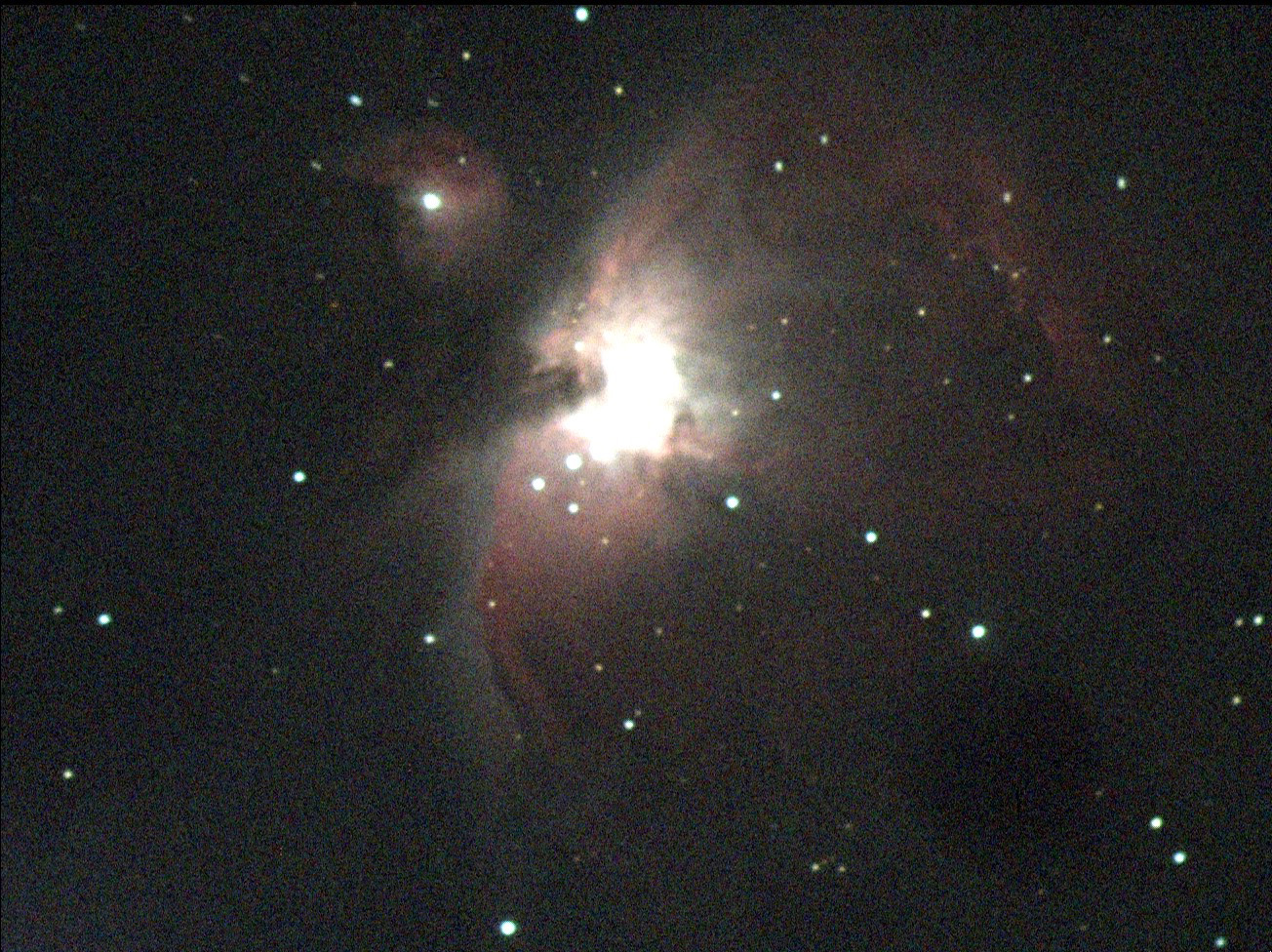 |
M 42 - Feb 12, 2022, unprocessed |
Gradually, I came to suscpect that the small FOV of the ASI224 camera might be the reason for my difficulties... In the following, I first also test my Atik Infinity in addition to the ASI224, and later a borrowed ASI294 with an even larger FOV (four times the FOV of the ASI224).
Now also with Atik Infinity...
Since I had little success with the ASI224 in using GoTo with plate solving, I suspected that the field of view of the ASI224 (0.65° x 0.48°) might perhaps be too small for the StellarMate. My little-used Atik Infinity, on the other hand, has a field of view that is almost twice as large (1.19° x 0.89°). And so I decided to try both cameras and start a small competition between them.
Night Test with PS 72/432, ASI224, Atik Infinity, StellarMate, and AZ-GTi (February 13, 2022)
As always in this year, I connected the AZ-GTi by cable (USB dongle) to the StellarMate. And, as always up to now, I started, with the ASI224 camera. On my first attempt at M 42, the mount was a bit off (despite a reasonably well home position). So I tried to "catch" M 42 using the direction buttons, but moving was a nightmare - either nothing moved at all after a button press, or the image overshot. Nevertheless, I was able to find M 42 in the end. The image results remained, however, poor.
M 42 - Feb 13, 2022, unprocessed |
Later in the evening, I came back to my idea to also try out the Atik Infinity, camera because it offers a larger field of view (about twice the FOV of the ASI224). However, it requires a voltage of 12V, which I was able to draw from the Sky-Watcher PowerTank without any problems. Sometimes, the camera worked somehow, and sometimes, it did not (at first, it even seemed to block the app). Later, nothing worked at all, and then clouds came up. I do not know what went wrong, because on later tests during the following days and nights, the AI worked more or less flawlessly (except for some app blocking...).
There were always problems with "Sync" when the app called Ekos. Possibly, my iPad lost the connection to the StellarMate network, which seems to be a plausible explanation. All in all, this was an evening where most of the time little seemed to work, and from which no conclusions could be drawn...
Dry Run with ASI224, Atik Infinity, StellarMate, and AZ-GTi (February 14, 2022)
The goal of this dry test was to check which mounts/cameras work at all with the StellarMate. I tested the following combinations:
- AZ-GTi (USB2/3), ASI224 (USB3)
- AZ-GTi (USB3), Atik Infinity (USB2)
- Star Discovery; here the camera did not matter, if the mount would not work with the StellarMate anyway (I took the Atik Infinity)
Ad 1) ASI224 and AZ-GTi: Ekos did not want to "Sync" (as it did the day before; USB3); but it worked after a complete restart of the app; ditto for my USB2 attempt. Apparently, the AZ-GTi works with both, USB2 and USB3, ports alike.
Ad 2) Atik Infinity and AZ-GTi: This combination also did work (also with "sync" problems; after restarting the app it worked); the AI camera worked fine this time, as far as I was able to see this in daylight.
Ad 3) Despite several attempts, the Star Discovery mount did not connect to the StellarMate.
Conclusion: During the day, I was able to work with the AZ-GTi (via cable) and both cameras (ASI224, AI) (the night before, the AI had made problems). The Star Discovery no longer works with the StellarMate.
Night Test with PS 72/432, Atik Infinity, StellarMate, and AZ-GTi (February 23, 2022, Erkerode)
The goal of this night test (7 to 9 p.m.) in Erkerode was to try out the Atik Infinity camera with the StellarMate (with AZ-GTi via Sky-Watcher USB dongle). Compared to the ASI224 camera, the AI has almost twice the field of view and should therefore be able to use more stars for plate solving (that was, at least, my idea...). Of course, I can only prove this assumption by testing the ASI224 at the same DSO...
The "technique" worked right away during the initial dry tests and also during observing. I set North for the home position using the iPhone compass app.
Targets: M 42, M 31, M 33 (did not work), M 78, M 1, break (8:05-9:30 p.m.), M 1, M 42, M 31, M 35 (+ NGC 2158), M 37, M 38, M 36. Here are my best photos of the respective DSO:
I was not able to find the Flame Nebula NGC 2024 in the StellarMate catalog (Alnitak would have worked...). M 33 could not be accessed, all other objects could be accessed, but not all searches reported a successful alignment. Overall, this was my best observing evening with the StellarMate (plus Atik Infinity) so far.
At the beginning, I used an exposure time of 5s. When I tried 2.5s, the app did not respond to anything, but took photos all the time. Later, I used 10s; then the app responded better. Nevertheless, there were quite a few delays, and sometimes app restarts were necessary to be able to continue. Often, the screen was not updated, sometimes only after restarting the app. The quality of the results was again poor, but I had not focused the PS 72/432 using a Bahtinov mask.
The interaction of the "Targets" tab (screen), Targets at Ekos, and the Targets button in the "T" Quick Menu still remained unclear to me. I also once accidentally turned off the tracking; then there were apparently no screen updates...
Night Test with PS 72/432, ASI224, StellarMate, and AZ-GTi (February 26, 2022, Erkerode)
The goal of this night test (7:30-8:10 p.m.) in Erkerode was to now try out the ASI224 camera at the StellarMate (with AZ-GTi connected via Sky-Watcher USB dongle), which has a much smaller field of view than the Atik Infinity. Therefore, it might use less stars for plate solving (that was, at least, my idea...) and possibly have more problems with it. At least, I can prove after this night test that plate solving was rarely successful...
The "technique" worked right away while observing. I set North for the home position using the iPhone compass app; focusing was first done using stars, later also by using a Bahtinov mask (on Alnitak). Apparently, the focus kept shifting a bit.
Originally, I thought of using similar targets as I had approached with the Atik Infinity, but this did not work. Only after much effort I found M 42; I was not able to find M 31. I therefore returned to M 42, found it only "so so" and finally accessed Alnitak, which I also used for focusing via a Bahtinov mask (after re-adjusting the home position). At Alnitak, the Flame Nebula NGC 2024 was also partly seen on the photos, once more, once less. Once again, there were problems with screen updates. I do not know of any trick yet with which this might be "enforced"...
Overall, this was a pretty "dreary observation evening" with nothing to offer to two girls except a blurry and then a slightly sharper Orion Nebula M 42.
Night Test with PS 72/432, ASI224, Atik Infinity, StellarMate, and AZ-GTi (Mar 24, 2022, Mühlhausen)
After the unsuccessful night test with the ASI224, the first goal of this observation evening was to test the ASI224 again on the StellarMate at night (with AZ-GTi). This remained without success: star patterns seemed "reproducible", but nothing was recognized (Rigel, M 42, Procyon, ...). Procyon was visible in the image, but was neither recognized as a target nor centered (and this reproducible!).
The "technique" worked right away while observing. Focusing was based on stars. Apparently, the sharpness shifted again and again a little... I set North for the home position using the iPhone compass app.
After a break, I changed my goal to now test the Atik Infinity at the StellarMate (with AZ-GTi) at night (9 - 10 pm?). I wondered if it might be the small FOV of the ASI224 that plate solving was not working. And indeed, some targets could now be approached with this camera, which has twice the FOV of the ASI224! It did not always work correctly, but it could be seen that the plate solving somehow "acted".
My targets were: Rigel?, M 42, NGC 2264 (Christmas Tree Cluster), NGC 2244 (Rosette Nebula), NGC 1499 (California Nebula), M 65/66, M 105, Leo Triplet (M 65/66, NGC 3628). Overall, the images were blurred (no Bahtinov mask used), and often showed star traces (poor tracking?). Here are some of my "better" photos:
Night Test with PS 72/432, ASI224, Atik Infinity, StellarMate, and AZ-GTi (March 25, 2022, Mühlhausen)
First, I tested the Atik Infinity at the StellarMate once more. M 42 could be accessed, Procyon and the Rosette Nebula (NGC 2244) as well. After/at Procyon, I focused with a Bahtinov mask in the 2nd attempt, but had big problems to overcome. Nevertheless, I succeeded in the end: M 42 could be accessed again and was sharper this time! The following photo is quite OK:
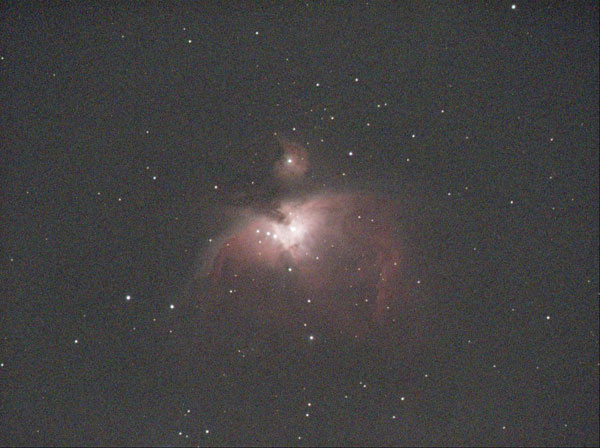 |
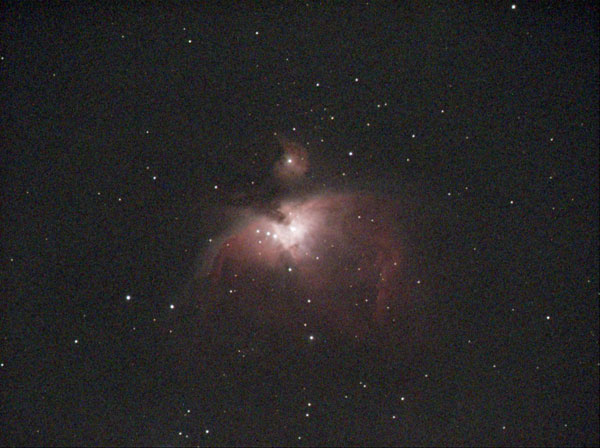 |
|
M 42/43 - Mar 25, 2022 |
M 42/43 - Mar 25, 2022, bearbeitet |
With the ASI224 NOTHING worked again. At the end, I "caught" M 42 probably by chance (completely out of focus...), but also lost it soon again...
Night Test with PS 72/432, ASI224, Atik Infinity, StellarMate, and AZ-GTi (March 26, 2022, Mühlhausen).
In the afternoon, I installed updates for the app (2.5.0) and the StellarMate OS (1.7.0). This had (mostly positive) consequences in several areas - as I often noticed only later...
First, I tested the ASI224 at the StellarMate. Focusing was done with the Bahtinov mask, and was a bit tedious. Maximum 19.6 SQM.
I found M 42 and a few other targets (M 42, NGC 2264, M 78 - 19:50-20:10), but the app always reported "alignment failed"...
Subsequent attempts with the Atik Infinity were quite chaotic... At first, nothing worked, later it worked a bit. But it was much worse than the day before! In the end, I found M 42 (with a branch; around 9:25 p.m.)...
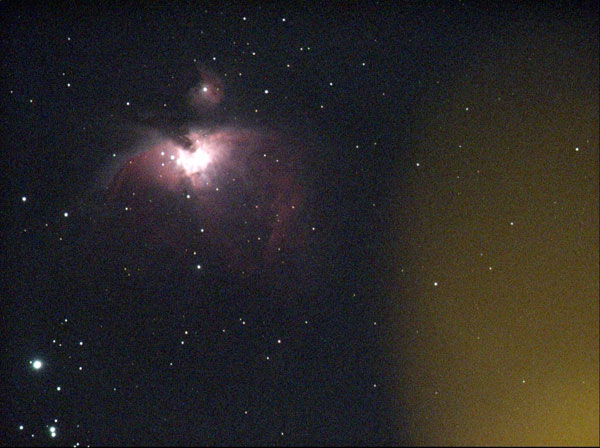 |
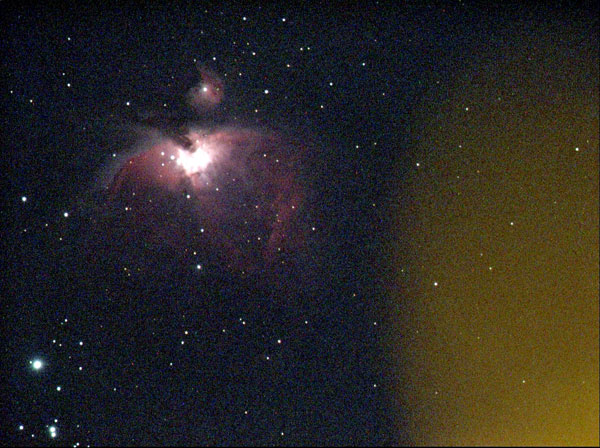 |
|
M 42/43 - Mar 26, 2022 |
M 42/43 - Mar 26, 2022, processed |
Night Test with PS 72/432, Atik Infinity, StellarMate, and AZ-GTi (March 27, 2022, Mühlhausen)
Sky quality was at maximum about 19.6 SQM; 9:10-11:25 p.m. (daylight saving time)
I observed only with the Atik Infinity. First, I accessed Procyon and focused with a Bahtinov mask. Then, I approached a couple of targets, found most of them, later also from inside (kitchen): M 42 (9:10-10:15 p.m.), M 81, M 82, M 51, M 65/66 (until 11:25 p.m.).
In Live Stacking mode, I deselected the "upper" options (dark frame/plate solving), and suddenly the refreshing of the images worked (sigma clipping probably did not matter)!
This evening was at least with the Atik Infinity a first success, because the Live Stacking worked better than ever before, the screen was updated, stacked photos could be saved (partly this apparently now also happened automatically*), etc. I suspect that this is related to the software update that I made two days earlier, where Live Stacking is explicitly mentioned in the notes. Now, only a similar result for the ASI224 was missing - and then I would declare the "first experience" phase over! Actually, this did noch happen, since I sold my ASI224 soon after (and bought a used ASI294)...
*) As I have learned in the meantime, manually saved stacks are stored in the "Photos" app of the iPhone, while automatically saved stacks end up in the /home/stellarmate/Pictures directory on the StellarMate disk and have to be transferred to the Mac via FTP software.
Night Test with PS 72/432, ASI224, StellarMate, and AZ-GTi (March 28, 2022, Mühlhausen)
This time, I made attempts with the ASI224. I first approached Procyon and focused with a Bahtinov mask.
I approached part of the previous day's targets and found some of them, later also from indoors.
Targets: M 42, M 81 (forgot to save photos manually, but found automatically saved ones later...), M 82; M 51 and M 65/66 did not work, because the were behind obstacles.
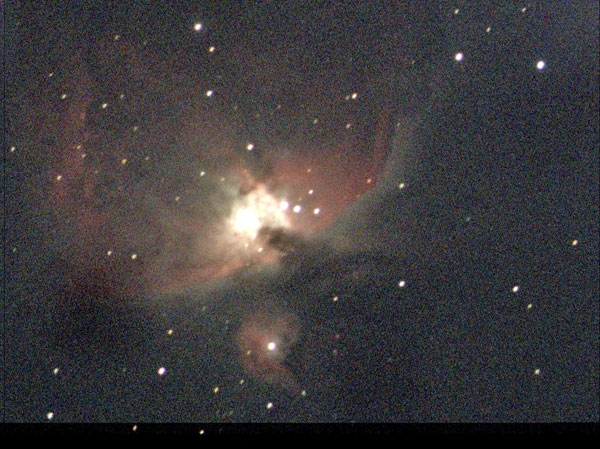 |
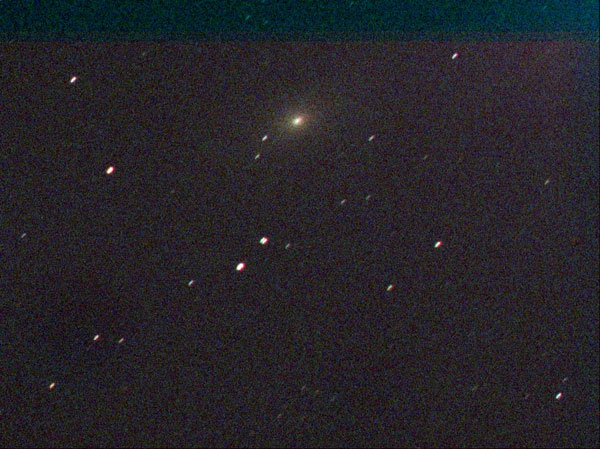 |
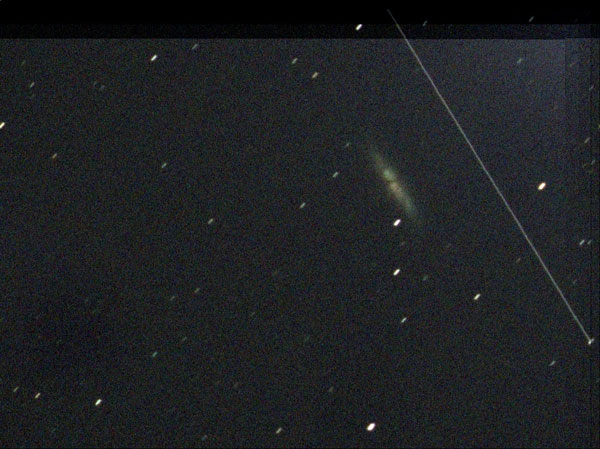 |
||
M 42/43 - Mar 28, 2022 |
M 81 - Mar 28, 2022 |
M 82 - Mar 28, 2022 |
Overall, the result did not look too bad for the ASI224, especially since the missed targets were hidden by obstacles (which I did not realize in the beginning...). It almost seemed as if the StellarMate would after the software update work together with the ASI224 as well. But further tests were still needed for a definitive clarification of this point - but this did not happen, because I sold my ASI224...
Now also with ASI294...
At the end of March 2022, a star friend borrowed me his ZWO ASI294 camera for testing, which has an even larger field of view of 2.54° x 1.73° at the PS 72/432. It is about twice as wide as that of the Atik Infinity and four times as wide as that of the ASI224. This camera should provide another building block in searching for an answer to the question, whether the field of view of the camera has an influence on the finding of targets by means of plate solving with the StellarMate. The whole thing fell, however, exactly into a period in which I was able to register first successes with the finding and tracking of DSO with StellarMate after a software update (1.7.0/2.5.0). Live stacking also worked much more reliably after the update, although I do not know the exact reasons for this yet. Apparently, the improvement was related to the fact that I had disabled the "Auto Dark" and "Plate Solve" items in live stacking (stacking or updating the stacked photo initially only worked when both were disabled; in later dry tests it was sufficient to disable only "Plate Solve"). In any case, after the update the ASI224 now also worked much better together with the StellarMate - undermining my hypothesis that the cameras' field of view plays an important role in plate solving. To cut a long story short, this hypothesis had now be tested with three cameras...
Night Test with PS 72/432, ASI224, ASI294, StellarMate, and AZ-GTi (April 3, 2022, Mühlhausen)
This time, I made attempts with the ASI224 and the ASI294:
- ASI224: Procyon (Bahtinov mask used for focusing), M 42, M 87 did not work, Alnitak (located more or less at the center, got nevertheless "Alignment failed" messages...) - supper break
- ASI294: Procyon (Bahtinov mask used for focusing), M 42 not selectable on the "Targets"* screen, M 81/82, M 65 (Leo triplet) found in second attempt, NGC 2244, M 51, M 95/96.
*) Since many targets do not appear in the "Targets" screen, I tried whether I would have more success with the "Targets" list in the "Targets" Quick menu (before the softeware update I had little success with this...). This actually helped in my attempts on April 18, 2022!
The ASI294 was vignetting, maybe, because the 1.25" connector with UV/IR filter was at the front*; the stacked photos were saved with 1920 x 1308 pixels (obviously caused by the Live Stacking), although the correct pixel size was shown in the StellarMate app.
*) When I later (Apr 18) took photos without a UV/IR filter, vignetting was the same.
ASI224
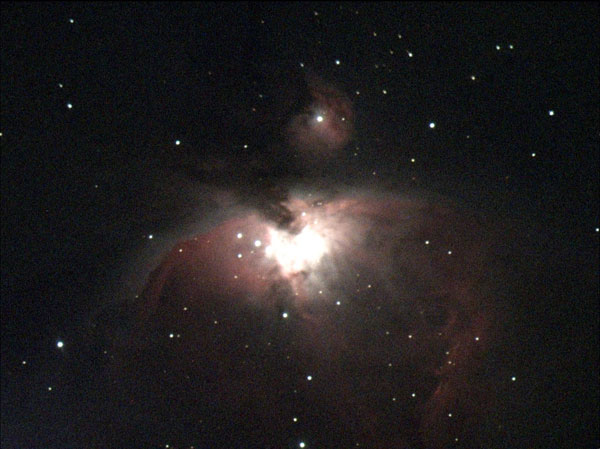 |
M 42/43 - Apr 3, 2022 |
ASI294
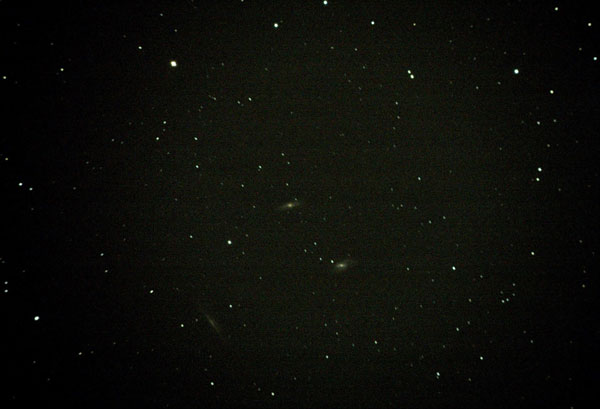 |
 |
|
Leo-Triplet - Apr 3, 2022 |
M 51 - Apr 3, 2022 |
|
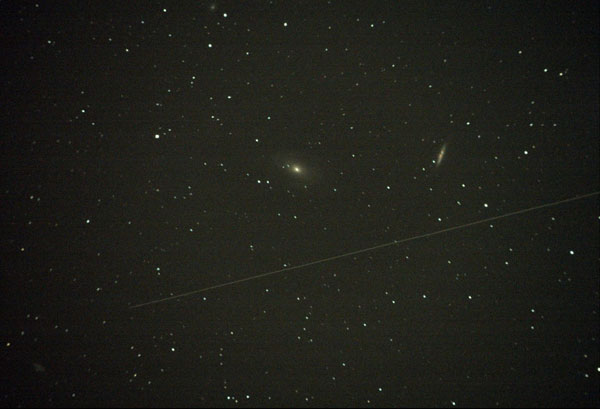 |
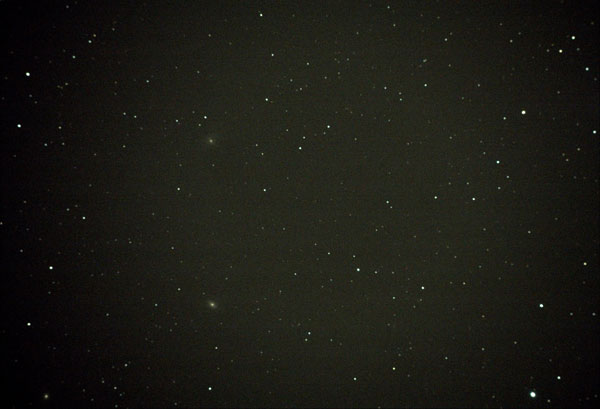 |
|
M 81/82 - Apr 3, 2022 |
M 95/96 - Apr 3, 2022 |
All in all, the ASI294 did not seem to find the targets much better than the ASI224 (with which only two targets were tested), but the time was too short for a serious testing. Certain targets were not offered by the StellarMate app's "Targets" screen (for whatever reason...), other targets did not work (which ones, I cannot remember anymore). Anyway, so far I cannot see that the ASI294 has any advantages over the ASI 224 (and the Atik Infinity) in finding targets...
Outlook
Due to the sale of my ASI224MC in the middle of April 2022, I can no longer check whether a narrow FOV like with this camera plays a role in plate solving (and GoTo). I therefore close the chapter "first experiences". I will cover details about GoTo/plate solving and live stacking, as well as further observations with the new ASI294, on new "further experiences" pages.
Preliminary Conclusions
Initially, the StellarMate astronomy computer produced very ambivalent impressions for me: sometimes everything seemed to work, sometimes nothing worked, and everything got only worse. This was not only my experience, but it was also reported several times in a Cloudy Nights discussion.
Meanwhile, I think that I have found a viable way for working with the StellarMate, with the StellarMate being the hotspot, and the mount being connected via an USB dongle. This way, the technique as such seemed to work. I therefore put the "cut" between both "First Experiences" pages at the time when I started to connect the mount no longer via Wi-Fi, but via a USB dongle with the StellarMate.
My experiences that I report on on this page were collected with the dongle connection in place, but since that connection worked right away, the emphasis on this page and my experiences is actualy on which camera works with the StellarMate and why (not). My initial guess was that this was related to the FOV of the cameras: the larger the FOV, so the more stars are available for plate solving, the better. My research on this is not yet complete, but it cannot be completed anymore, because I sold my camera with the smallest FOV, my ASI224MC, in mid-April 2022. I therefore close this page with the state reached so far, which gives justified reason for hope.
Overall, based on this experience, I can say that after the firmware update (OS version 1.7.0 and app version 2.5.0), live stacking worked "properly" for the first time with all cameras used, though certainly not yet as I would like it to. Even the ASI224 with the smallest FOV found targets, although I tested too few targets with it, to be able to state with certainty that it would find targets as well as the other two cameras. The other two cameras with twice or four times the FOV found most targets (the ASI294 also on April 18, 2022), although they rarely completed the alignment process with the respective message "Alignment completed".
Note: At the beginning of June 2024, I gave my astrophotography computer Ikarus StellarMate Plus away. I therefore cannot report any further experiences with it here. |
Links
- Ikarus Technologies, StellarMate: www.stellarmate.com
- StellarMate Manual: www.stellarmate.com/help
- Ikarus Technologies StellarMate PLUS Astrophotography Controller (astroshop.eu): www.astroshop.eu/controls/ikarus-technologies-stellarmate-plus-astrophotography-controller/p,68093
- HOWTO: Make a POWERFUL smart TELESCOPE! Better than much bigger telescopes! (Cuiv the Lazy Geek): youtu.be/0JdtL950RjQ
- Discussion in Cloudy Nights (CN), which Cuiv started to create attention to his video (A beginner-friendly smart EAA setup): www.cloudynights.com/topic/794637-a-beginner-friendly-smart-eaa-setup/
- Follow-up discussion in Cloudy Nights (CN) (A beginner-friendly smart EAA setup, restated, Ver. 2): www.cloudynights.com/topic/813424-a-beginner-friendly-smart-eaa-setup-restated-ver-2/
- See also my page offering Astronomy Links.
| 08.06.2024 |
